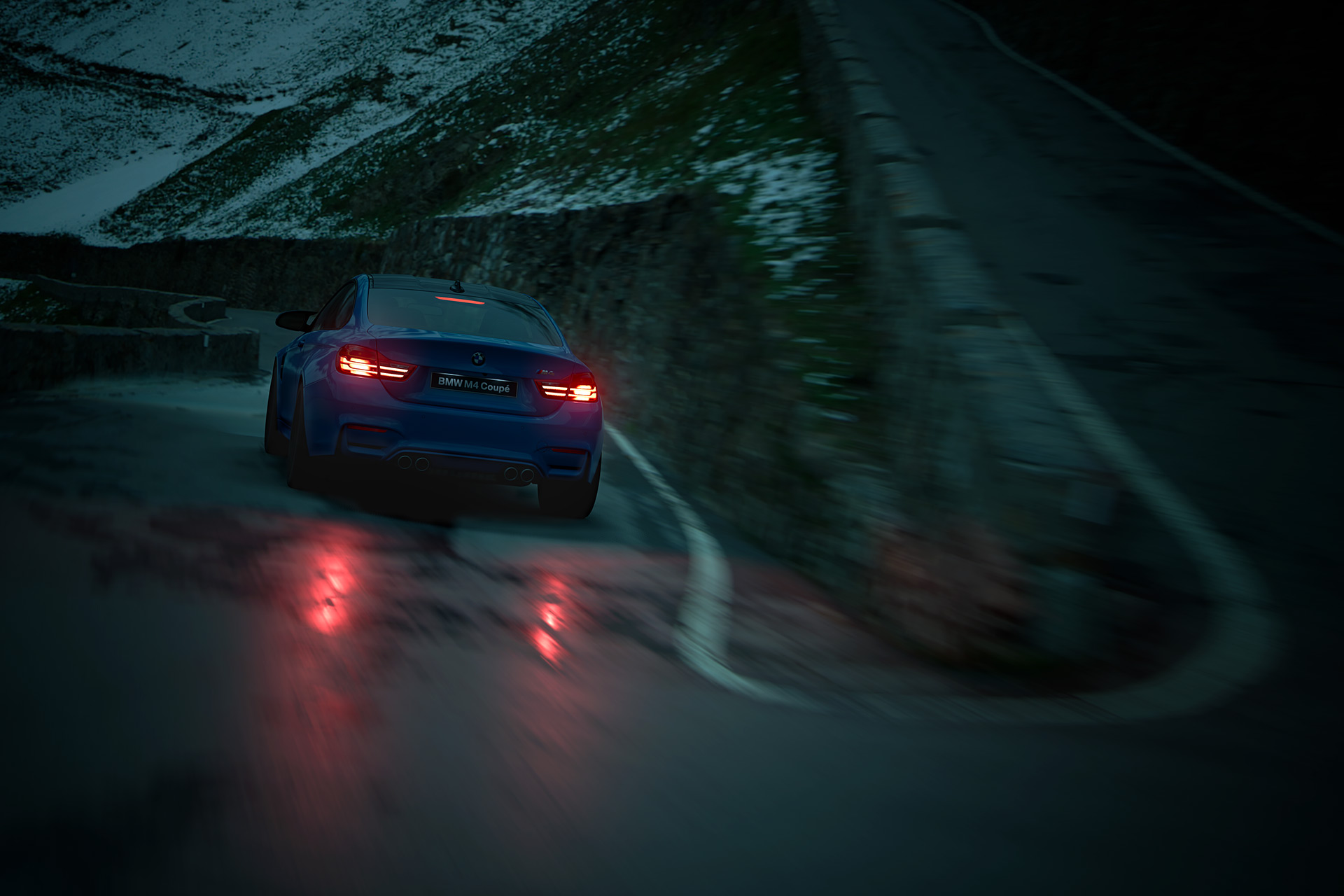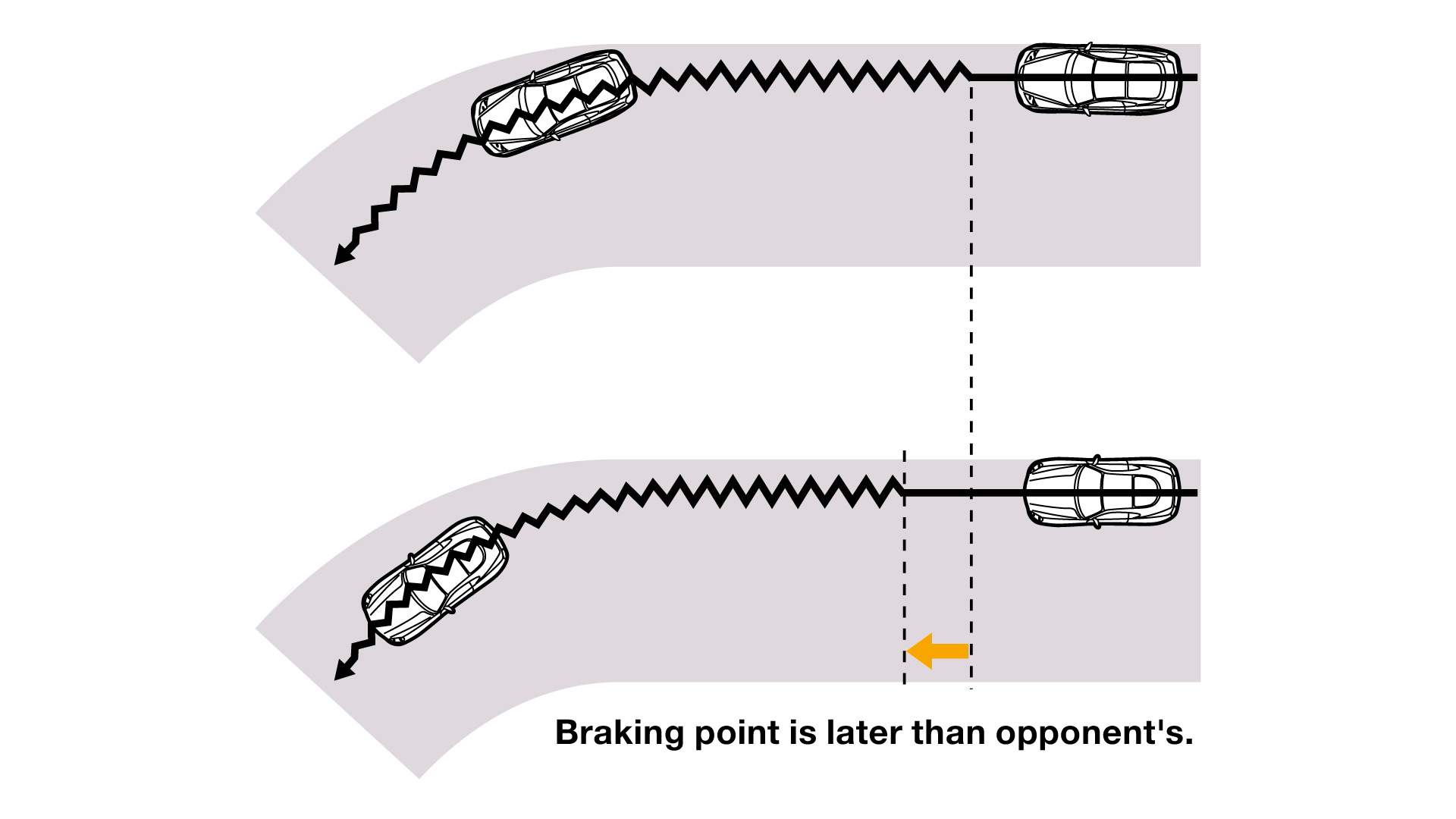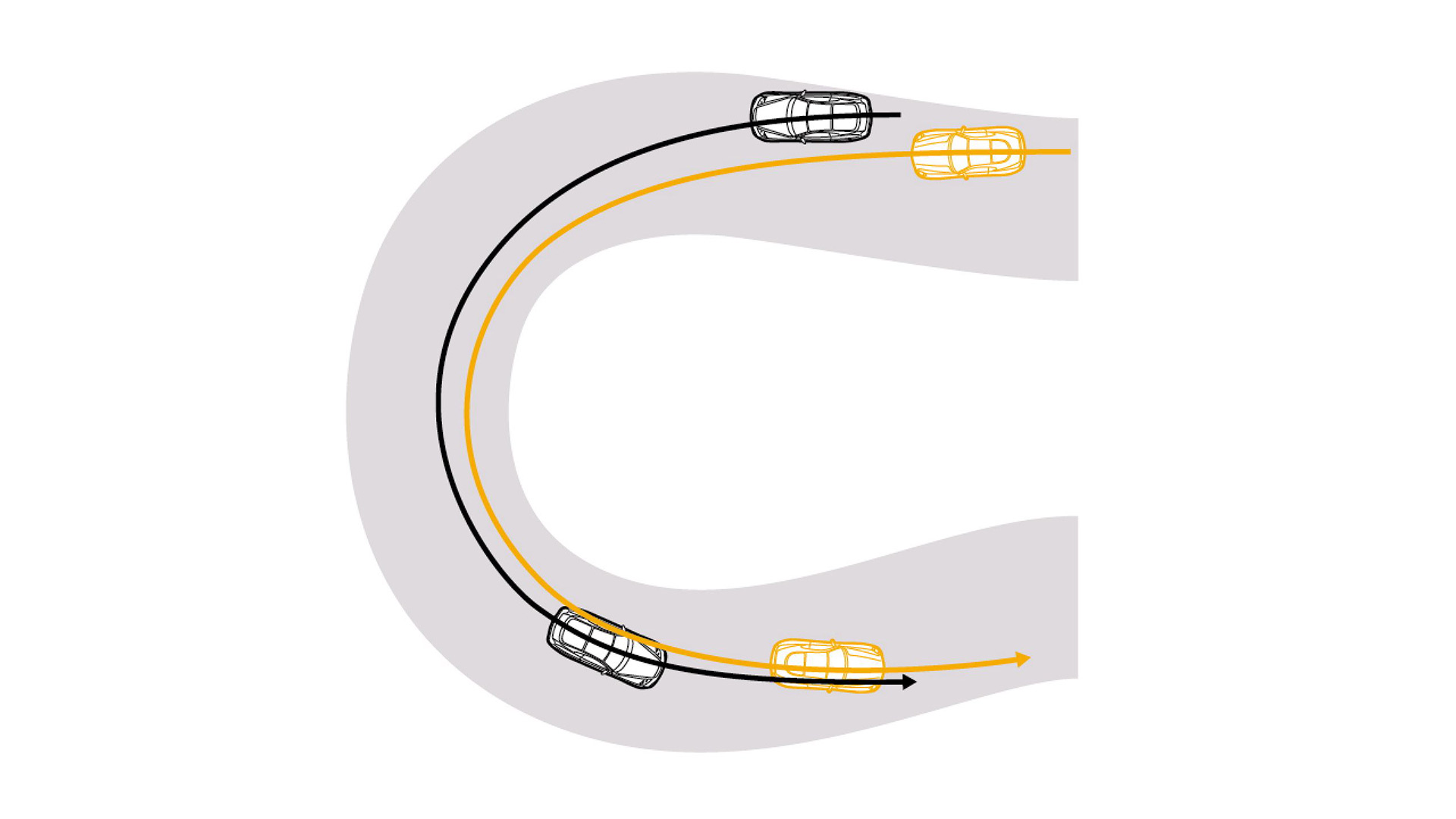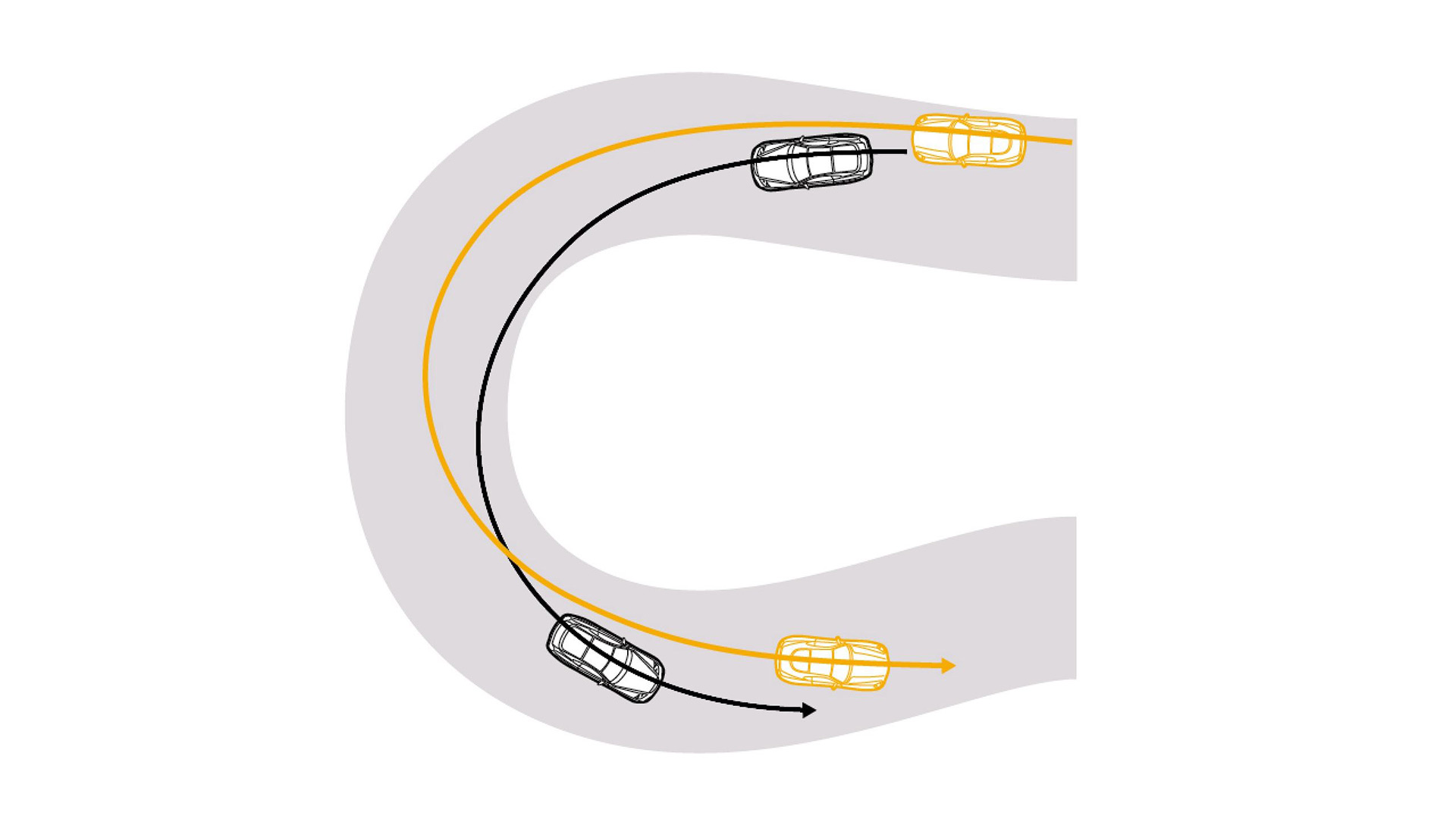Overtaking
Driving techniques & manners 12
Utilise long straights to get ahead of your rivals

In races, overtaking your opponents entails assessing the situation and acting precisely.
If a rival is in front of you, you need to understand the difference between their driving techniques and yours on the straights, at high-speed corners, and at low-speed corners.
Get an understanding of where there is a time difference between your car and theirs – if you can do this, it becomes possible to judge where to shorten the gap between you and your rival and the pace at which you want to chase them. When pursuing your rival, it is often effective to rattle their nerves by going tail-to-nose, getting right up behind them, and then going side-by-side. However, actions like these can lead to excessive tyre wear and time loss – so only drive this way if you know it will prove effective.
Most overtaking happens at the end of long straights. This is because you can utilise the huge change in speed to your advantage, so overtaking here has a high rate of success.
Once you’ve decided to overtake, come out of the corner before the straight in a driving line that allows high exit speed and get behind your opponent. In this situation, you can use their slipstream to your advantage (this is called drafting).
An area of low air pressure is formed behind a car driving at high speed. If another car enters this area, air resistance is reduced, allowing an increase in the pursuer's top speed that draws them closer to the car in front.

Fig. 12-1: Behind the front car is an area of low pressure. You can use this to pull your car closer to theirs.
Take care with your timing as you enter a slipstream. If you enter too early, you will get too close to the car in front midway through the straight and find it hard to overtake. Ideally, get right behind your opponent immediately before they start braking at the end of a straight; you can then manoeuvre to their side and overtake at the corner.
Judging braking in this situation to get ahead of your opponent can be challenging. You can brake later than your opponent to make it possible to pass them, but at the same time don't want to be going too fast to make the corner.

Fig. 12-2: Going too fast into a corner will lead to time loss, so obviously, you want to avoid this in qualifying. In the final race, however, it is more important to get ahead of your opponent. Even if your acceleration timing is delayed, it can be worth taking your chances here. Once you get ahead of your opponent (by delaying your brake timing slightly), be careful you are not immediately overtaken yourself.
When overtaking, you may have to give up on the optimal braking scenario we learned about previously. Even if your driving line goes wide at the corner exit and you are not able to accelerate under optimal conditions, it can still be worthwhile prioritising getting in front of your opponent when braking.

- Fig. 12-3: The yellow line indicates your car; the black indicates your rival's. If your speed from the straight before the corner is high, you can get on the inside of your competitor at the corner and drive a line that will give you the advantage.

- Fig. 12-4: This method prioritises acceleration out of the corner and overtaking by crossing your driving lines. Block your rival by making it look like you are taking the inside line of the corner and then cross their line as you accelerate out of the corner.
